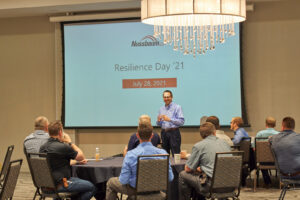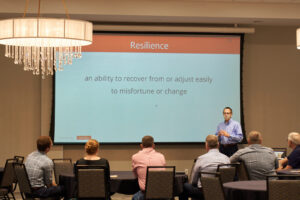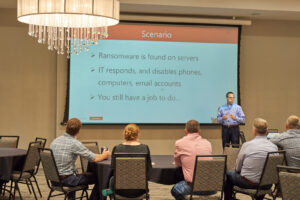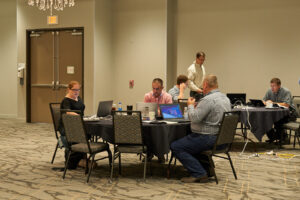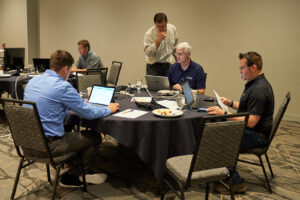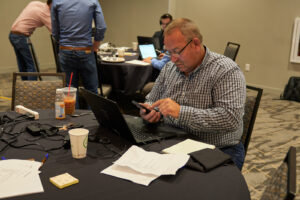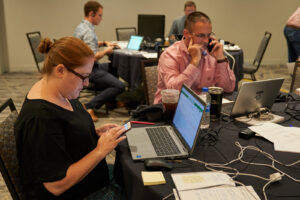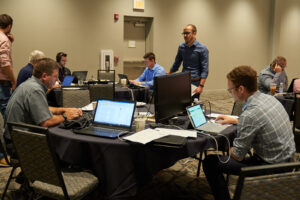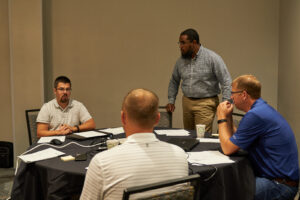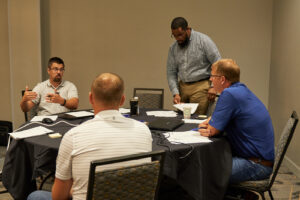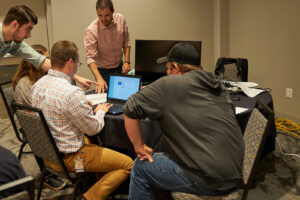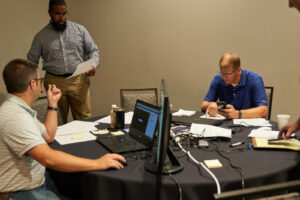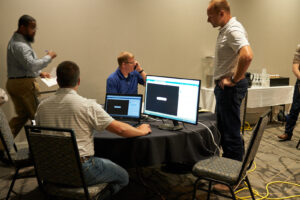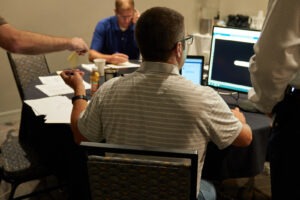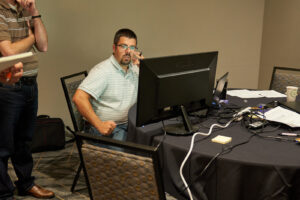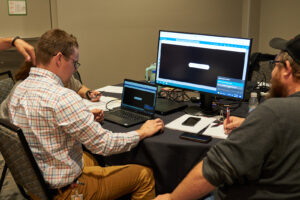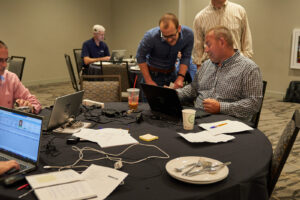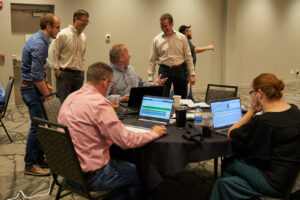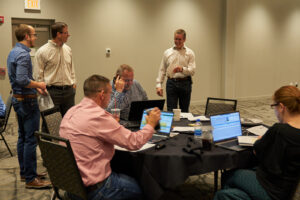Hacks, Cyber-Attacks, and the Facts
By: Saige Anderson
Scott Ubbenga: If this happens at 11 a.m. on a Monday, that is the best-case scenario. But what if it happens when we are all asleep? Who will wake us up?
Chris Chaney: I live the closest. So, if that happens, I will get the coffee ready.
Cyber-Attack Staged at Nussbaum
Over the past few months, each department has created a plan of action should a cyber-attack bust through the sturdy defense our IT Team has in place. A study shows that a hacker attacks every 39 seconds, and 43% of cyber-attacks target small businesses. And the global average cost of a data break is $3.9 million. Companies don’t only suffer from the monetary attack but also the effect on their reputation.
Nussbaum’s IT Team invited a group of managers and employees to participate in a staged cyber-attack to prepare for a worst-case scenario breach, should it happen at Nussbaum. The worst-case scenario means everything is down at Nussbaum for at least 30 minutes – no phones, no email, no computers, nothing.
What would recovery look like?
The IT Team put on an excellent simulation that prepped Nussbaum employees for a real-life cyber-attack on the company for Resilience Day 2021.
Resilience Day 2021
As I walked into the Holiday Inn where the staged cyber-attack was held, I couldn’t help but chuckle at the comfort and convenience of the staged scenario. If a ransomware attack occurred, would we have the comfort of a conference room with chandeliers? Absolutely not.
But how would the IT Team recreate the chaos of drivers needing immediate answers because they got in an accident or they broke down in dangerous conditions?
Or what about the customers who constantly function with time-sensitive freight?
Triage
Watching the event enfold reminded me of triage.
First, there was the scenario team acting as drivers and customers calling in. They pretended to be anyone from an angry motorist demanding justice to customers who needed quick answers, drivers who wanted to put in a vacation request, those needing breakdown help, and more.
Then there was the response team. They staged a blackout of communication for 30 minutes to simulate how long IT would need to wipe the system to produce a few clean laptops.
Once they had their computers, they only functioned off email and personal cell phones. The goal was to dispatch drivers, service customers, and maintain and repair equipment.
However, a 30-minute blackout results in an email and voicemail pile-up. Brent Martin comments, “On any given day, we have about 400 inbound calls in the span of a few hours. If a cyber-attack like this happens, we won’t be able to solve all the problems. But we will be able to communicate effectively, and that is the win.”
How did the response team do? And what is our plan if this cyber-attack happened in reality?
Find out more on an upcoming episode of Dashboard Radio on September 2. But one thing is for certain, Chris Chaney will have the coffee ready.

